#viscountess rochford
Text
JANE BOLEYN
JANE BOLEYN
Jane Boleyn, Viscountess Rochford
c.1505-1542
Jane Boleyn was born in Norfolk into a wealthy political family. Jane was sent to the royal court as a teenager to join the household of Queen Catherine of Aragon, the wife of King Henry VIII of England. She accompanied the royal party to France in 1520 for the Field of Cloth of Gold.
Jane was considered attractive but we have no known images of her. She was one of the lead actresses and dancers in the 1552 court masquerade which included Anne Boleyn and Mary Boleyn. In 1524, Jane married George Boleyn (Anne Boleyn’s brother) and became Lady Rochford. George was described as attractive, talented and promiscuous. He has been portrayed in modern times as homosexual, but there is no evidence to support this. King Henry VIII gave the couple Grimston Manor, Norfolk for a wedding gift.
King Henry VIII fell in love with Anne Boleyn and the family had gained more influence and wealth which Jane also benefited from. Henry married Anne in 1533 and Jane and George were given Palace of Beaulieu as their chief residence which they decorated; they eventually sold it to the king who refurbished and expanded it.
Anne Boleyn fell out of favour because she didn’t give Henry VIII his much desired son. Jane was married to George for eleven years when he was arrested in 1536 for treason after being accused of having sex with his sister the queen and he was imprisoned in the Tower of London. George was beheaded on Tower Hill in 1536 and Anne Boleyn was executed two days later. After her husband was executed, Jane was absent from court for several months but returned to attend to Henry VIII’s new wife, Jane Seymour. Boleyn lived in the palace and had her own servants.
Jane Seymour died in 1537 and Henry VIII remarried Anne of Cleves for political reasons. In 1540, Anne of Cleves confided to Jane that she never had sex with the king and Jane learned that Anne of Cleves was naïve when it came to sexual intimacy. Henry VIII wasn’t attracted to Cleves and had his marriage with her annulled so he could marry her lady-in-waiting, the teenager, Catherine Howard.
Boleyn became the lady-in-waiting to Catherine Howard, Howard wasn’t a virgin when she married the king and started a relationship with Henry VIII’s friend and courtier, Thomas Culpeper. Boleyn was implicated in the couples’ affair as she was helping them to meet up in secret. The affair was discovered and Howard was arrested and Jane was interrogated. Jane suffered a nervous breakdown and in 1542 was pronounced insane. In 1542, mentally ill people were considered too unfit to stand trial, and nobody knew whether Janes ‘fits of frenzy’ was genuine or it was just her attempt to escape prosecution. Henry VIII was determined to have her punished, and changed the law which allowed the insane to be executed. She was found guilty for her involvement and was condemened to death.
Jane was executed on 13 February 1542, the same day as Catherine Howard. Howard was executed first, Jane was then escorted from her lodgings to the scaffold. On the scaffold she spoke and apologised for her many sins and then kneeled down. Boleyn was beheaded from a single blow of the axe. She was buried in the church of St Peter ad Vincula within the Tower of London, alongside the bodies of Catherine Howard, Anne Boleyn and George Boleyn.
Over 300 years later in 1876, Queen Victoria had renovations done to the church and Jane Boleyn and the other victims’ bodies was rediscovered. The Queen had the bodies exhumed and placed in individual coffins and had a plaque with their names affixed to each coffin and were given a proper reburial underneath the alter.

#janeboleyn #janeboleynviscountessrochford #ladyrochford #georgeboleyn
0 notes
Text
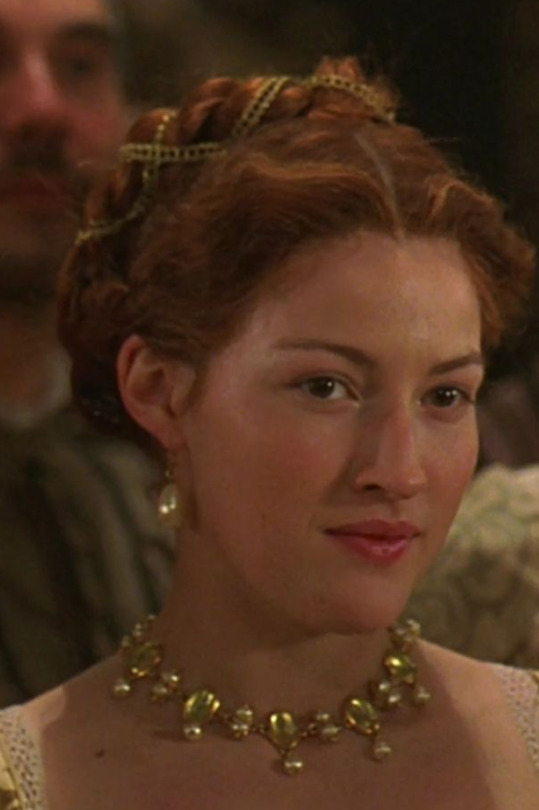
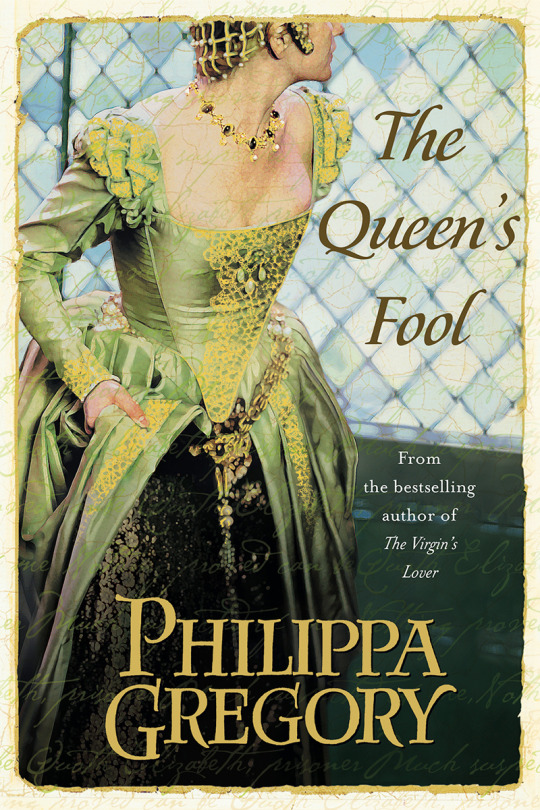

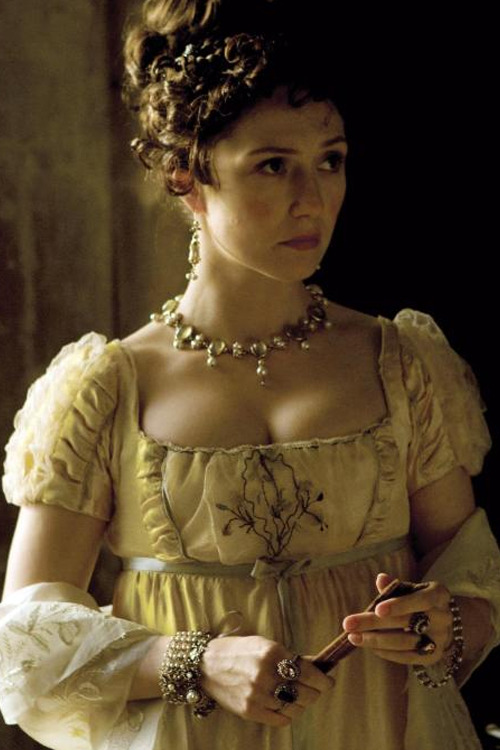
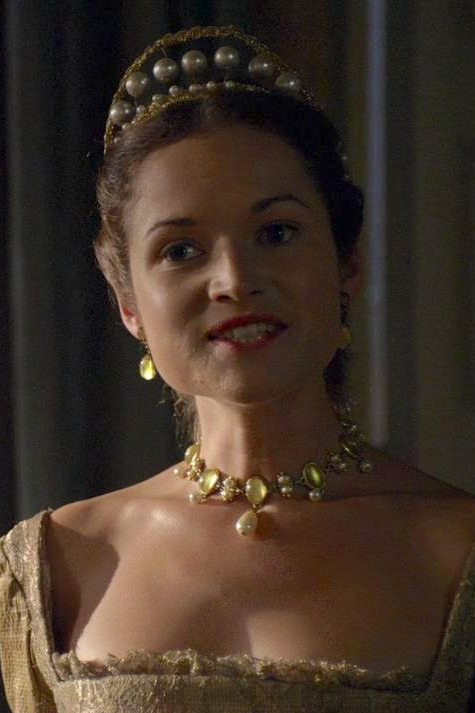
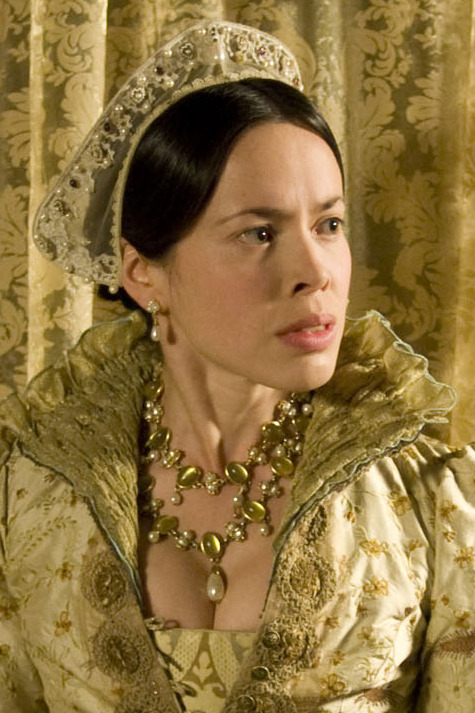
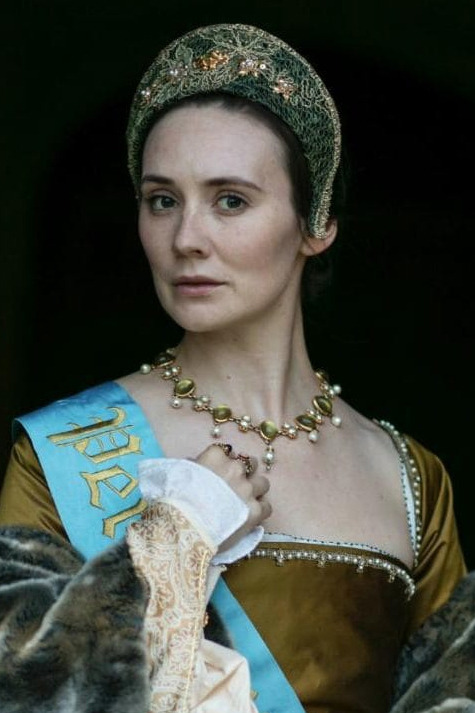
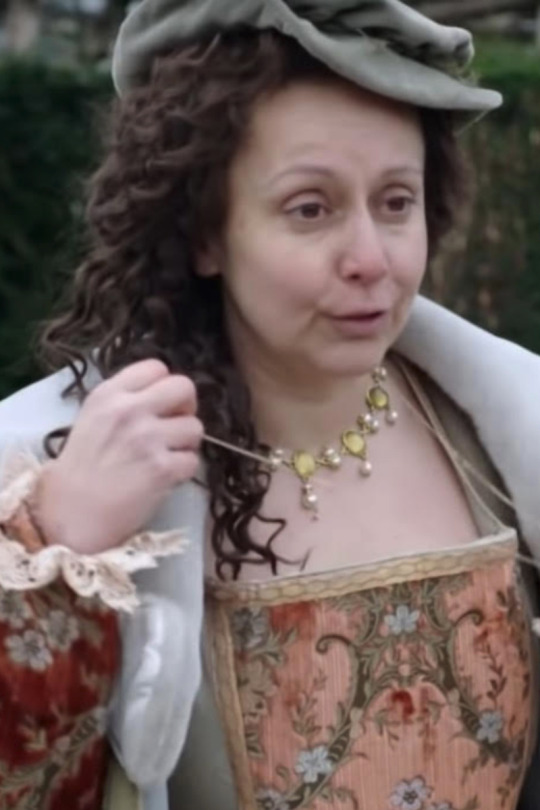

These amber necklaces made their first appearance in the 1998 film Elizabeth, where they were worn by several ladies-in-waiting, including Kelly Macdonald as Isabel Knollys (pictured) and Emily Mortimer as Kat Ashley.
Because quite a few were made, all of the necklaces documented here may be "different," though they all clearly come from the same set. Thus, for the purposes of documentation, Recycled Movie Costumes considers them��"the same."
In 2003, one of the necklaces appeared on the cover of Philippa Gregory's The Queen's Fool. In 2007, it was seen on another book cover - this time photoshopped red on Alison Weir's Innocent Traitor.
In 2009, the necklace was worn by Carice van Houten as Maria Oldknow in From Time to Time.
In 2010, one necklace was worn by Joanne King as Jane Boleyn née Parker, Viscountess Rochford in the fourth season of The Tudors, and later that same year, two of the necklaces were worn by Fiona Hampton as Lady Matilda in The Sarah Jane Adventures.
In 2016, Claire Cooper was spotted wearing one of the pieces as Anne Boleyn in Six Wives with Lucy Worsley.
In 2021 it was worn in The Boleyns: A Scandalous Family on an extra playing Margaret of Austria, before being used in 2024's Wolf Hall: The Mirror and the Light, where it was seen around the neck of Lilit Lesser as Princess Mary Tudor.
248 notes
·
View notes
Note
How is the relationship between Katherine Howard and her maidservants?
✨ terfs/zionists fuck off ✨
i talked about this here.
there seems to have been some level of dysfunction in her household — gareth russell has claimed that “katherine’s household was festering with private tensions”, and josephine wilkinson has pointed out that “katherine’s ladies would find their mistress quite demanding […] while katherine had been taught to serve, and had gained experience in service, she was not yet used to being served”.
she apparently worked them hard, and asked strange and uneasy jobs of them, “treating her servants terribly, snapping at them and issuing orders that confused or upset them” (russell). katherine tilney reported being confused by messages she was asked to deliver, and margaret morton reported how they were kept up until the early hours of the morning, for reasons they could not understand, quoting tilney as complaining “jesus, is not the queen abed yet?” on one such occasion: “the chamberers were being dragged around back stairwells to spend half the night waiting in alcoves” (russell).
there was a further breakdown in the relationship between mistress and servant in terms of access to the queen. katherine denied ladies of the privy chamber access to her “unless called” — “this was very far from normal behaviours for a queen consort, considering that members of the queen’s household usually had access to all the spaces that the queen inhabited” (wilkinson). this was compounded by the preferential treatment shown towards katherine tilney: “margaret [morton] and maud [luffkyn] felt that closeness threatened, and they were not happy about it. ever since katherine tilney’s arrival, queen katherine howard ‘could not abide’ their presence” (clark). likewise jane rochford, who had more access to and involvement with katherine than the other ladies, prompted discontent: “the ascendancy of lady rochford provoked the jealousy of their female equivalents” (russell), “favouritism often created tensions within the household [… rochford’s] ascendancy in the queen’s affections provoked the jealousy of those less fortunate servants who did not share in her mind and favour” (taffe), “margaret’s words, written down later, suggest that she blamed jane, viscountess rochford for the current politics in the queen’s chamber. certainly the others had also noticed the queen’s extraordinary preference for jane” (clark). this can’t have helped the apparent sense of job uncertainty, as katherine threatened to dismiss two women (morton and luffkyn) at one point — “the queen was angry […] and threatened to put them away”.
katherine “applied her independent agency as queen. however, she had done it in a way that was not in accordance with gendered norms of queenly or wifely behaviour. she behaved in ways that were unusual and had caused suspicion among her chamberers by preventing them from accessing the private spaces that she inhabited” (wilkinson). then again, all these women were badly frightened and giving testimony against katherine (and jane) at this point. it’s possible that this context skews the veracity of their claims.
11 notes
·
View notes
Note
which line from the novel most represents it as a whole?
who are your character faceclaims?
In her worst nightmares, the King dies, and Elizabeth is never safe. On their way to claim her kingdom, Anne's brother is arrested, and the Princess is sent to the Tower 'for her own protection', by the official line, but truly, she is arrested as the rival heir, as it was for her own grand-uncles, as it was for their maternal ones. As those doors are shut and locked, the signatures of all the men that swore to uphold her as heiress to the throne are thrown into a great bonfire. As the smoke swirls and the embers fly and rise unto those high-storied accomodations, mingling with the mist off the Thames, she can never reach through the surreal gauze of both to break their fortressed windows.
I have so many! I really like Alessandra Mastronardi:

For Anne and for Henry, I'm still stuck on Jack Hawkins...

fancast review reply. also, go to tagged/jane boleyn or tagged/viscountess rochford , tagged/countess of wiltshire <3
#a 'line'...oops#giadesstrin#NT previews#not so much most representative of the WIP entirely but the best blueprint to help lead decisions re: her character work; for sure#honestly; it's a good bet to scroll and just ask fjdksfjs#i haven't tagged stuff in a while but most gifsets i reblog are NT inspo#i like christa theret for lady (princess ...to all outside england) mary#also just strolling through the comments...you can probably find; lol#there was one i dropped a bunch of faceclaim links; i might just find it and post it...
6 notes
·
View notes
Text
“As was usual, the queen’s women frequently encountered the gentlemen of the king’s privy chamber in the course of their duties. Equally naturally, flirtations sprang up, ran their short course and died as regularly as the waxing and waning of the moon. Among the king’s gentlemen in the winter of 1539 was Thomas Culpeper, much in favour with the king. Culpeper was the kind of man who enjoyed useful connections and pretty women, and among the queen’s maids of honour he had both. Katherine and Culpeper had got along well. But Katherine was not a stranger to flirtation, and apparently held firm against him: there would be nothing else unless he promised her something more concrete. This was not part of Culpeper’s plan, and he turned instead to other women. Katherine, unused to rejection, was shocked, sad and no doubt had to watch these other relationships blossom in front of her. ‘Her grief was such’, she later told him, ‘that she could not but weep in the presence of her fellows’, the other girls. But soon the king himself made his interest clear and it was not long before she was elevated above her wildest dreams, and far above Thomas Culpeper.
Queen Katherine chose to make him smart for his earlier rejection. One of his new conquests was Bess Harvey. Bess had previously served Queen Anne Boleyn, and had been among the group of women who had been to view the king’s ships at Portsmouth in August 1539. At some stage in the spring or summer of 1541, Queen Katherine gave Bess a gown of damask and sent Jane, Viscountess Rochford to Culpeper with a pointed message: ‘he did ill to suffer his tenement’ – Bess – ‘to be so ill-repaired’ and so Katherine ‘for to save his honesty’ had covered the cost on it. It was a bold and relatable, if petty, triumph and says much about Queen Katherine’s personality. We don’t know precisely when Katherine played this card, but at some stage after she became queen Katherine and Culpeper reconnected. Of itself this wasn’t necessarily a problem. Queens naturally encountered men who were not the king. They had to work with them: the queen’s council, over half of her household and the entirety of the king’s were men. To interact with men for the sake of politics, patronage and even friendship was normal, but Queen Anne Boleyn’s execution five years previously had shown that such relationships might be all too easily, even wilfully, misinterpreted.”
— Nicola Clark, The Waiting Game
10 notes
·
View notes
Note
If someone came to you tomorrow and said we need you to make a movie or TV series about Anne Boleyn who would you cast (for Anne or for any other characters you would include)?
I would need a time machine for some of them (unless we were doing a series about her through flashbacks of those who survived her...could be great, actually), such as:
Sarah Foret as Mary (Howard) Fitzroy, Duchess of Richmond:
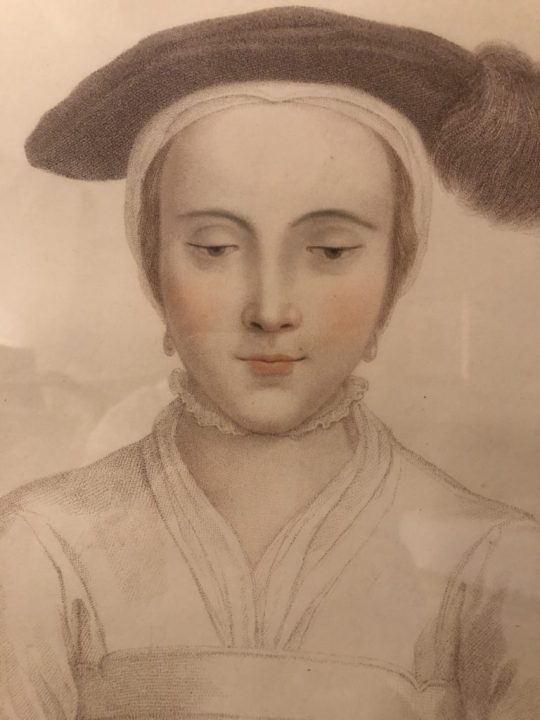
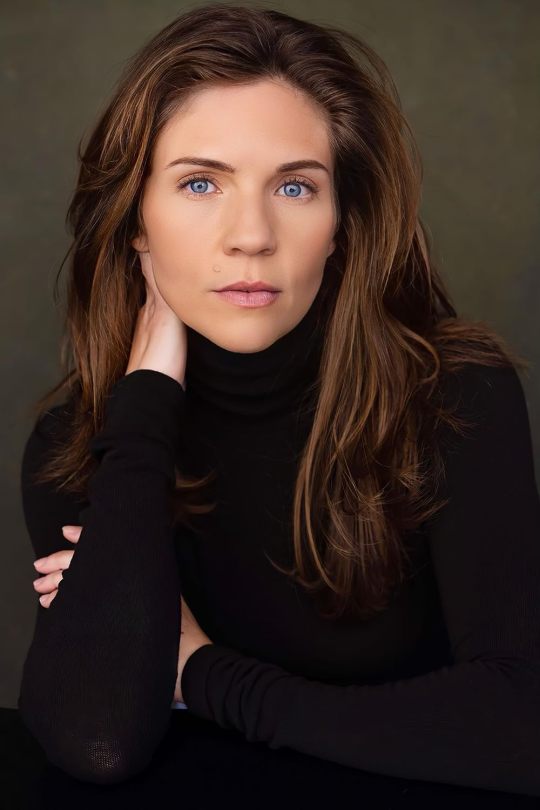
The above would be like, her in the 1550s? Sarah Foret circa 2004 is truly how I envision Mary in the 1530s tho:

(Left)
Ok, good a starting point as any, let's go with the rest of the relevant Howards:
Lotte Verbeek or Caitronia Balfe as Elizabeth (Howard) Boleyn, Countess of Wiltshire (these would be perfect if we began around 1520), Natasha McElhone for late 1530s

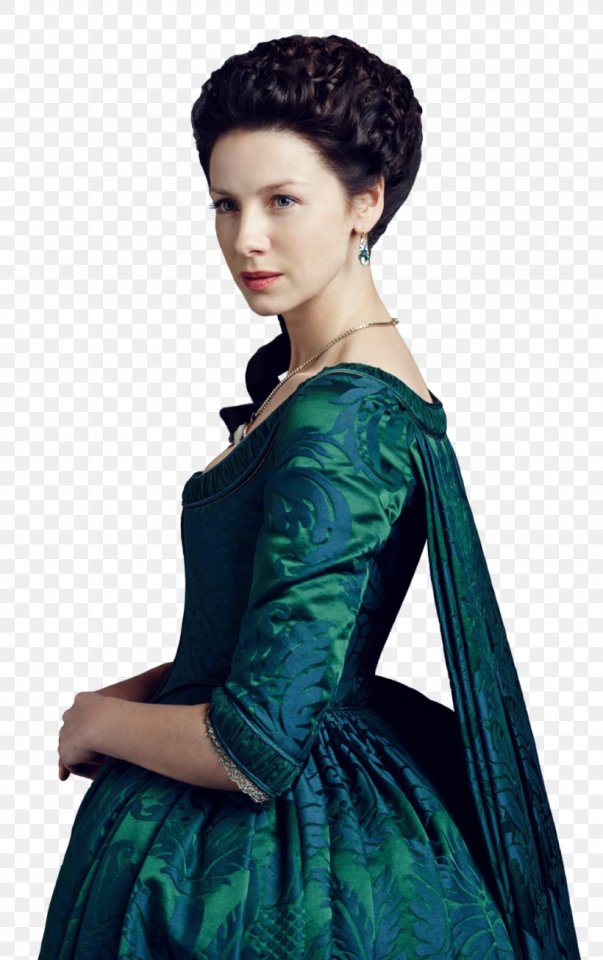
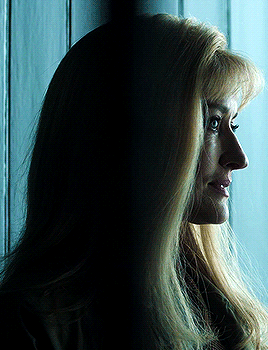
Colm Meaney as Thomas Howard, 2nd Duke of Norfolk:

Jeremy Irons as Thomas Howard, 3rd Duke of Norfolk (1540s...for earlier I can't think of who has the right juice to pull this role off, maybe Pablo Schreiber?):

Now, onto the Boleyns,
Either Aidan Turner or Ben Barnes as Thomas Boleyn, Earl of Wiltshire (again, circa 1520, they are actually the right age for this, had to remind myself of this, too), Tobias Menzies for late 1530s

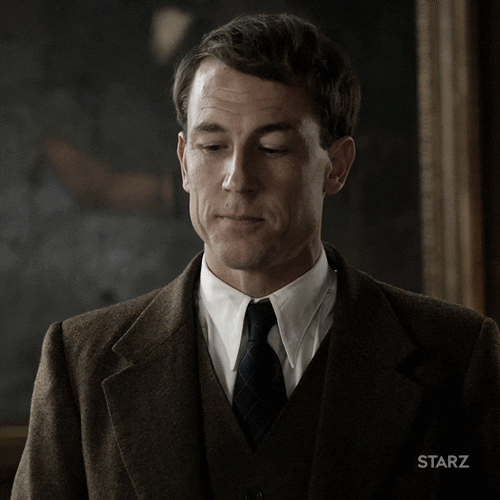
Theo James (this is cheating, unless I'm casting an AU where the Boleyns rise and do not fall 1536-, aha...unless?, but I know he can convicingly play a wide array of ages from Time Traveler's Wife) or Leo Suter (more accurately aged) for George Boleyn, Viscount Rochford, or somewhere in between, Jonathan Bailey:

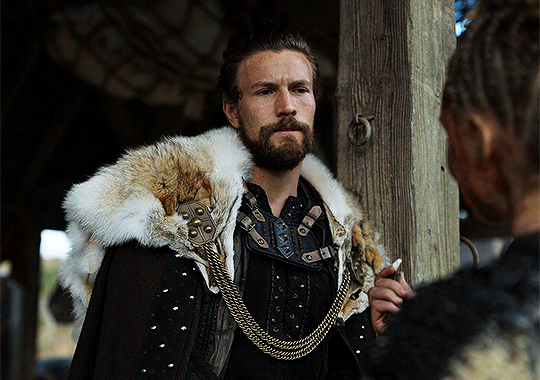

For Mary Boleyn, I'm going to shortcut again and go with a previous documentary casting, Elizabeth McCafferty (I loved Lois Brabin's acting but it's really clear the casting department wanted to play on the 'contrast' btwn sisters for BSR, the one confirmed portrait we have of Mary suggests that she was actually brunette with amber eyes, not the ScarJo typecast that has had such staying power):


For Jane (Parker) Boleyn, Viscountess Rochford, I would cast Morfydd Clark:

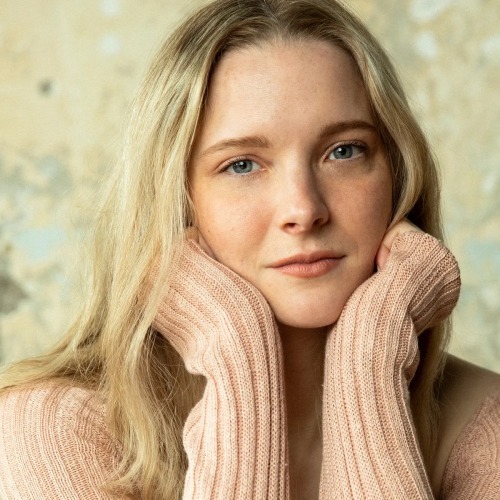
Phoning in the Henry&Anne, I'm going to stay with the casting of the newest Borman documentary short (I simply love it, so),
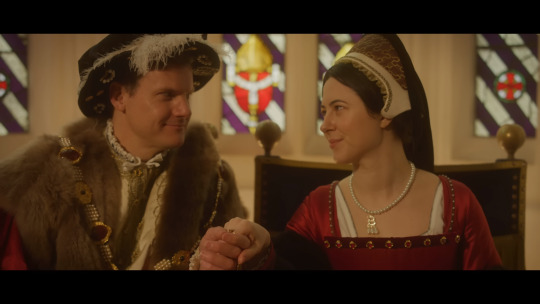
But I'm going to try my hand at Henry VIII circa 1540s and cast Eric Keenleyside:


I've stayed in the familial but I'm also going to play my ace of casting Sarah Pidgeon as Margaret Wyatt (hopefully BSR has broken the mold and in the future we're going to get the full cast of AB's confidantes and friends, among them:

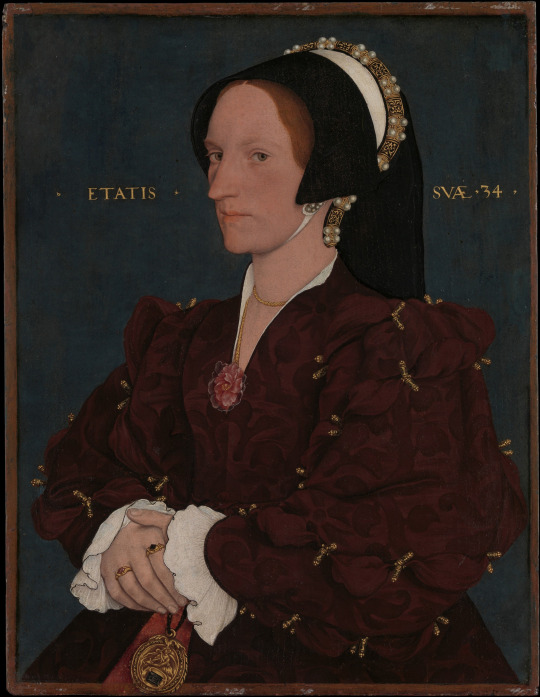
15 notes
·
View notes
Text
Sophie Boettge
In the Source Link, you will find a complete gif pack of Sophie Boettge in Blood, Sex and Royalty. Sophie played the role of Jane Boleyn.
Jane Boleyn was born as Jane Parker, she was by birth, the second cousin of King Henry VIII and became the sister-in-law of Henry’s second wife Anne Boleyn when Jane married Anne’s only brother George Boleyn. She was known as Viscountess Rochford or Lady Rochford, she later became a lady-in-waiting to Jane Seymour, before the same position to Anne of Cleves. She testified that Anne had confided in her that she and Henry had not consummated their marriage, which allowed Henry to annul his marriage to Anne of Cleves and marry Catherine Howard.
Jane maintained her position as lady-in-waiting to the new queen. Jane was arrested along with many people and the Queen after rumours about her past surfaced. Suffering from a nervous breakdown to months of mental abuse from the interrogations, she was legally pronounced insane and unfit for trial. However, Henry manipulated the law so that the legally insane may be executed for high treason, as such, Jane along with Queen Catherine were charged with high treason and sentenced to die on February 13th 1542. Jane appeared calm and serene before the end.


Source - FabledEnigma
#sophie boettge#sophie boettge gif#blood sex & royalty#the boleyn family#jane boleyn#jane boleyn gif
2 notes
·
View notes
Text
In the Source Link, you will find a complete gif pack of Sophie Boettge in Blood, Sex and Royalty. Sophie played the role of Jane Boleyn.
Jane Boleyn was born as Jane Parker, she was by birth, the second cousin of King Henry VIII and became the sister-in-law of Henry's second wife Anne Boleyn when Jane married Anne's only brother George Boleyn. She was known as Viscountess Rochford or Lady Rochford, she later became a lady-in-waiting to Jane Seymour, before the same position to Anne of Cleves. She testified that Anne had confided in her that she and Henry had not consummated their marriage, which allowed Henry to annul his marriage to Anne of Cleves and marry Catherine Howard.
Jane maintained her position as lady-in-waiting to the new queen. Jane was arrested along with many people and the Queen after rumours about her past surfaced. Suffering from a nervous breakdown to months of mental abuse from the interrogations, she was legally pronounced insane and unfit for trial. However, Henry manipulated the law so that the legally insane may be executed for high treason, as such, Jane along with Queen Catherine were charged with high treason and sentenced to die on February 13th 1542. Jane appeared calm and serene before the end.


Source - FabledEnigma
#sophie boettge#sophie boettge gif#sophie boettge gifs#sophie boettge gif pack#sophie boettge gif set#jane boleyn#jane boleyn gif#jane boleyn gifs#jane boleyn gif pack#jane boleyn gif set#blood sex&royalty#boleyn family#boleyn gifs#george boleyn gifs#tudor period#the tudor dynasty#tudor#lady rochford#lady rochford gif#lady rochford gifs#viscountess rochford
3 notes
·
View notes
Text

Miniature of Jane Boleyn, Viscountess Rochford (ADD NAME OF ARTIST & DATE). NB I've since found out that the miniature has also been attributed to be that of Lady Jane Grey.
I need at some point in my life (i.e. not today) to compile a list of all the major players in the court of Henry VIII who were executed upon his orders, and what misdemeanours they had been accused of.
My scant notes for Jane Boleyn are as follows:
Born circa 1505. Wife of George Boleyn, brother of Anne. AKA Lady Rochford.
Why did she arrange meetings between Katherine Howard and Thomas Culpeper?
Thomas Cranmer (Archbishop of Canterbury) heard rumours about Katherine's earlier liaisons and interrogated Jane who confessed that she knew about the secret meetings.
Executed in 1540, age 36/37.
Side notes are:
Culpeper was related to both Anne and Katherine - were they all cousins? Katherine's mother was called Joyce Culpeper.
Henry VIII was on good terms with Culpeper until he heard the rumours. What was his role within the court/royal household?
The Boleyns were a noble Roman Catholic family from Norfolk who were rivals with Cranmer's family.
Another man, Francis Dereham, was also executed for alleged adultery with Katherine. Who was he, and were any more involved/executed?
Cranmer survived Henry (he died in 1547) and continued as archbishop during the reigns of Edward VI and (for a short time) Mary I. He was a leading figure in the English Reformation.
Thomas Cromwell, Henry's chief minister who helped engineer an annulment of the king's marriage to Catherine of Aragon so he could marry Anne, was executed on 28th July 1540, the same day Henry wed wife No. 5, Katherine Howard. What were the charges against him?
Katherine Howard was executed on 13th February 1542, exact age unknown but in her teens, between 16 and 19.
Anne Boleyn was executed on 19th May 1536, age 29 or 35.
See letter that was written by Katherine to Culpeper that was regarded as a love letter and used as evidence of a relationship between them, but was actually very possibly a response to an attempt by him to blackmail Katherine about her past. Brief discussion here on a National Archives podcast.
Further reading (not read it yet)
It is estimated that during his 36 years of rule over England, Henry VIII executed up to 57,000 people. Click here for more info. (I just want a list of the key players!)
0 notes
Text
And for news from hence, know ye, that, even according to my writing on Sunday last, I see the Queen and the lady Retcheford suffer within the Tower, the day following; whose souls (I doubt not) be with God, for they made the most godly and Christians’ end that ever was heard tell of (I think) since the world’s creation, uttering their lively faith in the blood of Christ only, with wonderful patience and constancy to the death, and, with goodly words and steadfast countenance, they desired all Christian people to take regard unto their worthy and just punishment with death, for their offences against God heinously from their youth upward, in breaking of all his commandments, and also against the King’s royal majesty very dangerously; wherefor they, being justly condemned (as they said), by the laws of the realm and Parliament, to die, required the people (I say) to take example at them for amendment of their ungodly lives, and gladly obey the King in all things, for whose preservation they did heartily pray, and willed all people so to do, commending their souls to God and earnestly calling for mercy upon Him, whom I beseech to give us grace with such faith, hope, and charity, at our departing out of this miserable world, to come to the fruition of his Godhead in joy everlasting. Amen.
—Ottwell Johnson’s account of the executions of Katheryn Howard and Jane Boleyn, Viscountess Rochford on 13 February 1542 [via On This Day in Tudor History by Claire Ridgeway]
#jane boleyn#jane parker#jane rochford#katheryn howard#katherine howard#catherine howard#quote#claire ridgeway
0 notes
Text

#Jane Parker#Jane boleyn#lady Rochford#Viscountess Rochford#not me having a crush on Jane no sirree#pfffft ridiculous -#don't tell anyone
9 notes
·
View notes
Text
If i was to write a six fanfic would yall rather read an angsty Anne and Rocky reunion(i mean like rocky techincally is a little blamed in history for annes beheading) or a fluffy the other queens finding out about parrward
#i just have jane boleyn anne boleyn feels#i mean dont judge me#jane boleyn#viscountess rochford#parrward#cathy parr#anne boleyn#katherine howard#beheaded cousins#i have an idea for angst and for fluff
13 notes
·
View notes
Text
Since I’ve nothing better to do... I’ve decided to make a Six OC (an unoriginal idea I know). I’m unable to access colouring materials so... yeah I’m a shitty artist, sorry about the terrible art. The details are pretty long due to the drawings... I would put them under a line break but uh... my phone isn’t allowing me to do that.


Anyways, the OC is Jane Parker. AKA Jane Boleyn, Viscountess Rochford who was allegedly the one who arranged meetings between Katherine Howard and Thomas Culpeper. She chooses to stick with her own surname and not her married surname because technically, she’s no longer married to George Boleyn in her reincarnated life.
I imagine her to be reincarnated a few years before the queens, and teaches them the choreography and other dance stuff. I... honestly have no idea what’s the exact role she would take, but either way, it’s definitely related to dancing. This is because she was one of the lead performers in the Château Vert masquerade in 1522.
According to research (which I’ll shamelessly admit it’s just Wikipedia here), the historical figure Jane was executed via an axe on the same day (13 February 1542) as Katherine Howard, with the queen being executed first. She suffered a nervous breakdown during interrogation and since King Henry VIII wanted a reason to execute her for facilitating meetings for Katherine and Thomas, he passed a law that allowed the insane to be executed for high treason.
Reincarnated Jane tries to stay out of conflict between @spooner7308’s Elizabeth Barton and the queens, and doesn’t mention about how she died to the electrician. So far, Barton hasn’t reminded Jane about the differences in their executions which would imply that they have a positive-ish relationship for now? She's on talking terms with all the queens, though she suspects that Katherine dislikes her (which is true).

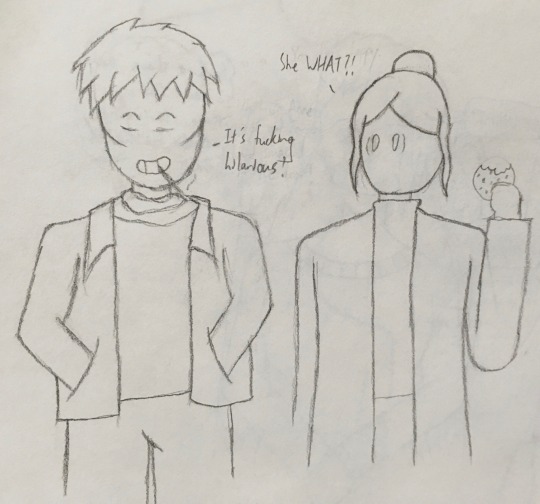
Even though Anne is Jane’s sister-in-law, she’s certainly not going to stand up against Barton. She values her life too much to stand up for her sister-in-law when Barton’s laughing at Anne’s misfortune.

There’s nothing remarkable to say about Jane’s personality, except that she avoids interfering in the matters of others because she does not want a repeat of the events that lead up to her death. That, and she can be insensitive at times while getting the queens to dance as seen above.

As seen in this picture, she’s very desperate for a relationship (preferably girls) and dislikes it whenever a couple flirts in front of her (especially in the mornings).


Her hobby... I suppose getting plastered with @spooner7308’s Joan as seen in the two pictures above while bemoaning about her single status.


As mentioned above, Jane is desperate for a relationship. This is to the extent that Barton and Anne are able to somewhat agree on something, as well as greatly annoying the theatre stage manager @thenicestnonbinary’s Anya Askew.
#six oc#Viscountess Rochford#Altair draws#I'm sorry that I can't draw Barton and Anya at all#Jane Parker (Sixtended)
19 notes
·
View notes
Text
Who is ... Jane Boleyn, Lady Rochford?
Who is … Jane Boleyn, Lady Rochford?

Name: Jane Parker / Jane Boleyn
Title/s: Lady Rochford / Viscountess Rochford
Birth: c.1505
Death: 13 February 1542 at the Tower of London
Burial: Chapel of St Peter ad Vincula, Tower of London
Spouse: George Boleyn, Lord Rochford c.1503-1536
Children: None
Parents: George Parker, Lord Morley (c.1476-1556) & Alice St John (c.1484-1552)
Siblings:Henry Parker (c.1513-1553) &…
View On WordPress
#Alison Weir#boleyn#Emily Purdy#George Boleyn#Hilary Mantel#Jane#Jane Boleyn#jane parker#Jessica Raine#Joanne King#Julia Fox#Kelly Hunter#lady rochford#Leanda de Lisle#Philippa Gregory#profile#rochford#Sheila Burrell#Tower of London#viscountess rochford#who is
0 notes
Text
Fantasy Guide to Noble Titles & What they Mean

So I get a lot of questions about what nobles actually do or how much they own or why a certain title is higher than another. Understanding the complexities of nobility and their hierarchy can be a bit of a head twister but hopefully this will help you out. Just for the moment we will be focusing on European Titles because I can't fit all the titles into one post. Forgive my shitty doodles. The diagrams mark out where the particular noble would rule.
Archduke/Archduchess

These titles have two meanings. In the latter half of the Austrian Empire, it was used to denote senior members of the Royal family such as children and siblings. It is also a non Royal title given to someone who rules an archduchy, a large portion of land with in the kingdom. They are in charge of the archduchy, ensuring it runs smoothly. They are referred to as Your Grace.
Grand Duke/Grand Duchess
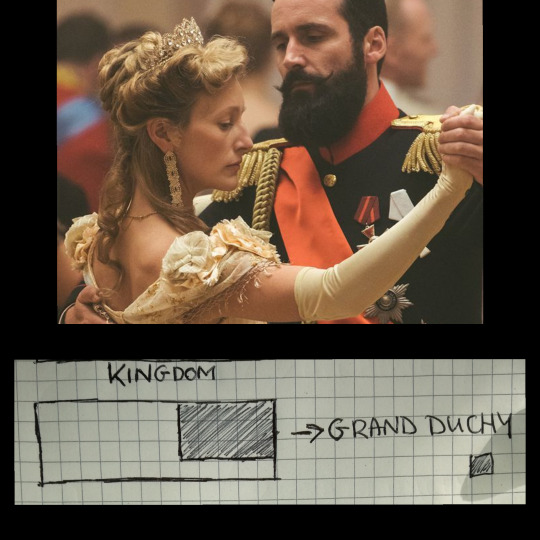
The Grand Duke is probably the trickiest of all these titles as there is a dual meaning. A Grand Duke can rule a state as a sovereign like in Luxembourg or they can rule a Grand Duchy (a large portion of land within a kingdom) like the Grand Dukes of Russia. The Grand Duke was below the Archduke and their lands may be smaller. They are in charge of ruling their Grand Duchy, upholding the monarch's laws in their name. They are referred to as Your Grace.
Duke/Duchess

The Duke is the highest rank in most European nations. The Duke rules a large portion of the kingdom- called a Duchy- which you can think of as a county/state. The Duchies are often awarded by the monarch to their children who are not the heir. The Duke is charge with running that portion of land by order of the monarch, handling the over all business of that piece of the Kingdom. Dukes are referred to as Your Grace. There was only one Duke per Duchy.
Marquess/Marchioness

A Marquess is the next rung down from Dukes. The Marquess is in charge of a portion of land within a Duchy which is called a Marsh which lays near a border. The Marquess is solely responsible for the running of that portion of land. The Marquess is called The Most Honourable (Insert name), the Marquess of XYZ. There could be multiple marquesses in a Duchy if it was near a large border.
Earl/Count/Countess/Compte/Comptesse

An Earl/Count Rules over an Earldom, which is a section of a Duchy but it has less importance than a Marsh ruled by the Marquess. The Earl/Count is the third highest ranking within the Duchy. Often it was the subsidiary title of the heir of the Dukedom, so the eldest son/daughter of the Duke would be the Earl. The Earl/Count of X is addressed as Lord X for example, the Earl of Grantham, is called Lord Grantham. There could be multiple Earls/counts per Duchy.
Viscount/Viscountess/Viscompte/Viscomptess

Viscounts are the Earl/Count's second in command, ruling a portion of land with the Earldom. They handled the judiciary matters of their lands and their barons. Viscounts were addressed as the Right Honourable (insert name) Viscount of XY. Viscounts can also be used as a subsidiary title for the son of a Earl. When Thomas Boleyn was made Earl of Wiltshire, his son George was made Viscount Rochford. There might be multiple Viscounts in a Duchy.
Baron/Baroness

The Baron is the lowest of ranks in the nobility pyramid. Before the mid-medieval period, almost all nobles were labelled as Barons. They ruled over a portion of the land under the Duke, the Earl and Viscount. There were always a huge force of barons with in the Duchy. They handled the minor local disputes of their lands, collecting taxes and monies owed. If they faced a larger issue or crime, they would pass it up to the next ranking noble the Viscount and then it could travel all the way up to the Duke. The Baron of Townville were referred to as as Lord Townville.
#Fantasy guide to nobility#Nobles#fantasy nobility#Fantasy guide#Writing reference writing Resource#writing resources writing advice#writing advice writing reference#writing resources#writing reference#writing advice#writing#writeblr#writer's problems#spilled words#writer#writer's life#Earl#Countess#Duke#Archduke#Grand duchess#Viscount#Baron#Baroness#Marchioness#Marquess
15K notes
·
View notes
Photo


ANNA BREWSTER as JANE BOLEYN, VISCOUNTESS ROCHFORD
ANNE BOLEYN (2021)
#perioddramaedit#periodedit#perioddramasource#tudoredit#anneboleyn2021edit#jane boleyn#jane parker#anna brewster#show: anne boleyn (2021)#reign: henry viii#ours#*gifs#sky
260 notes
·
View notes